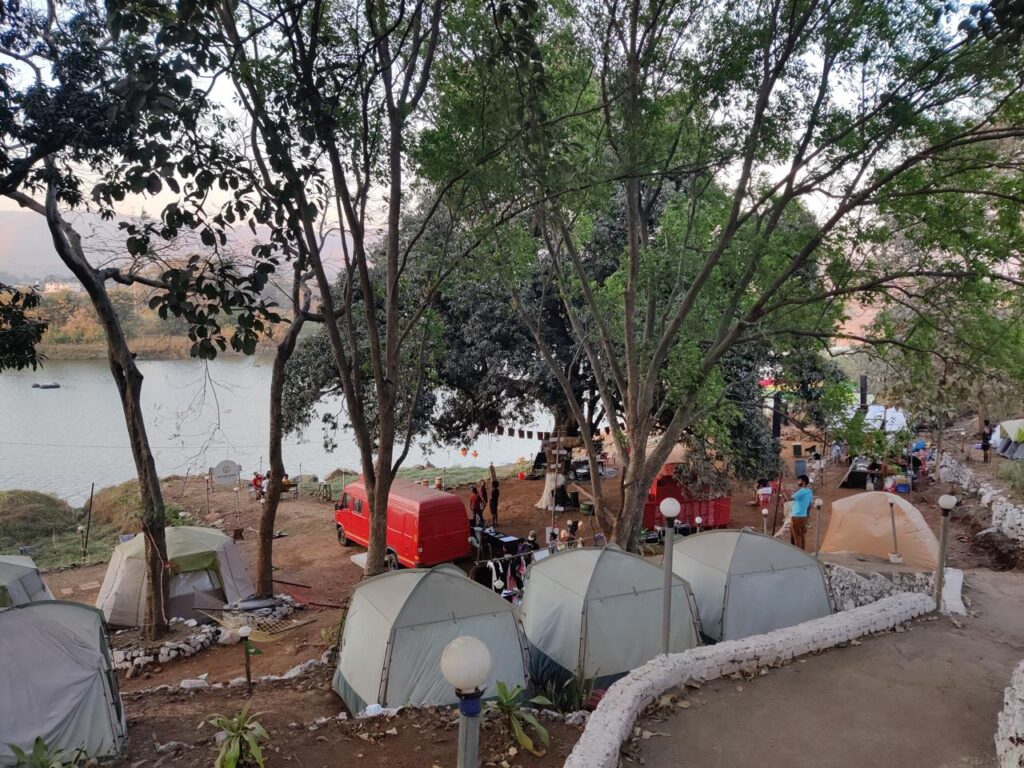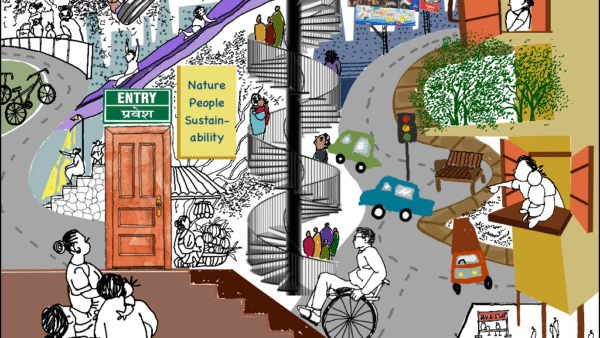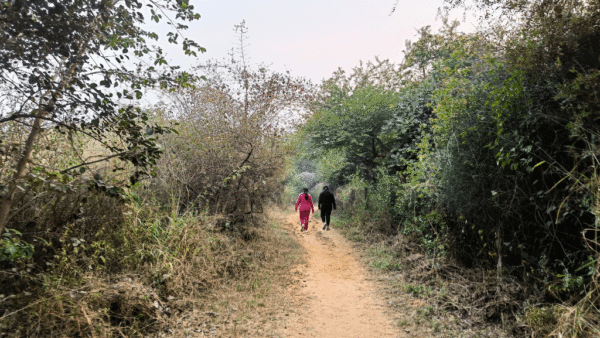Virender Singh had just finished high school in 2014 when he started interning at the Jabarkhet Nature Reserve. It was a private and protected forest area, about five kilometres from Mussoorie, the famous tourist destination at the foothills in the Garhwal region of the Himalayas. The town’s historical buildings exuded colonial charm but its verdant green was already under pressure from an increasing tourist inflow.
The land where Singh took his tentative steps was an open space that locals used to collect firewood from or host picnics in. Dr Sejal Worah, a long-time resident of Mussoorie and Programme Manager at the World Wildlife Fund (WWF) India, thought it could be more. With Vipul Jain, who owned it, she surveyed the land for its ecology and, together, they established the Jabarkhet Nature Reserve. A decade later, the forest offers stunning views, nature trails, guided walks, and birdwatching opportunities. Importantly, it is one of the few forest patches near Mussoorie where nature lovers can see nearly 100 species of wild mushrooms, more than 300 flowering plants and 150 species of birds, and the ‘lesser’ Himalayan wildlife. So far, the Reserve has clocked about 30,000 visitors.
Singh, a mountaineer now, leads nature and educational walks here. “Our property and activities are zero-waste,” he says. The focus on connecting with nature and enjoying it means the core team, which now includes locals, encourages people to carry refillable water bottles, among other little eco-friendly tasks such as regularly cleaning the Reserve, and dealing with ‘legacy litter’ which shows up years after being under the soil. “Nature should not be adversely affected because of our activities,” Singh says to Question of Cities.
The Jabarkhet Nature Reserve and youngsters like Singh are the living definition of ecotourism that’s slowly gaining ground as popular destinations show the wear and tear of conventional tourism Ecotourism, a way to make tourism sustainable, stands for travelling to natural areas and living in ways that minimise the negative impacts of tourism and benefit the environment and local communities. Globally, the four Cs of ecotourism are widely considered to be Conservation, Community, Culture, Commerce.[1]
Commerce is not absent in ecotourism – it is placed after the other three – considering that the tourism industry contributed US$10.9 trillion to the global GDP or almost 10 percent of the world’s economic output last year. In India, ecotourism is still a small fraction. In 2023, it accounted for US$ 8.4 billion of the US$ 231 billion sector in the country but industry reports say it is poised to reach US$50.4 billion by 2033.[2] The buzzwords are around us – zero-waste, responsible travel, nature travel, hotel chains encouraging reuse of towels, delayed change of bed linen, reducing air conditioner temperature, and refilling glass water bottles.
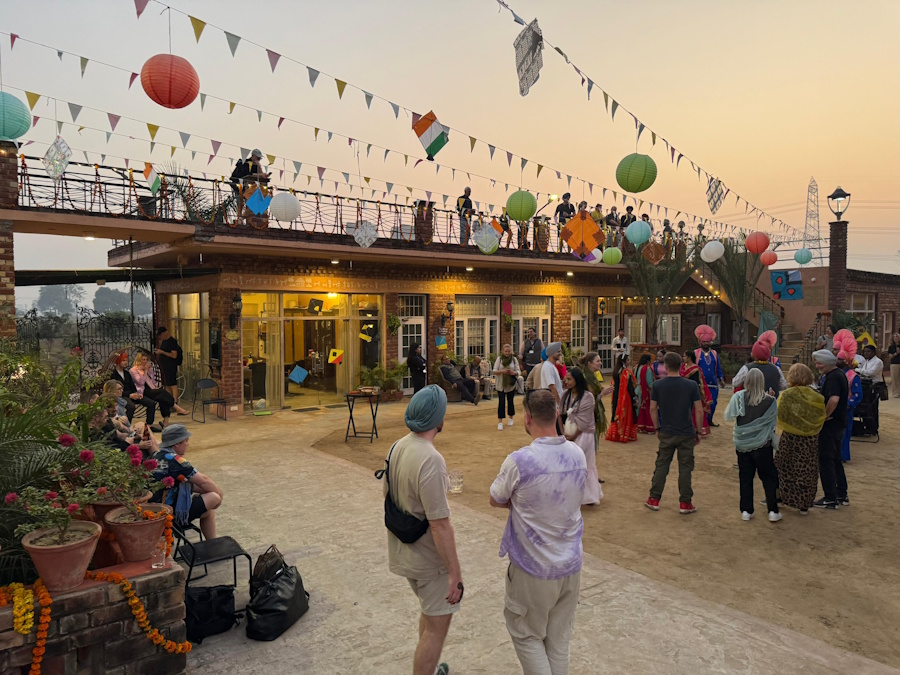
Photo: Pavail Gill
Beyond the buzz
Travellers are latching on to the idea of ecotourism, thanks to the internet turning it into the flavour of the season, especially for a certain class. While zero-waste resorts, nature-friendly homestays, glass water bottles, and recyclables are welcome, they are but a drop in the ocean. The burgeoning growth in tourist arrivals has put considerable strain on natural areas as once-lush forests and sparkling streams or rivers are replaced with constructed facilities and roads to accommodate visitors.[3]
India has a National Strategy for Ecotourism[4] but many are unaware of it. Even if awareness spreads, its principles would be difficult to apply because hospitality, by default, means extravagance for tourists who feel entitled to it. However, people like Singh show us it is possible. There are others too.
Fayaz Ahmad Dar segued ecotourism principles with the local culture of Jammu and Kashmir to build the SAGG Eco-village by transforming two acres of barren land in Chanthan, Gulapora. The farm offers an experiential stay in traditional homes, pesticide-free native plants, and zero-waste kitchens, toilets and gardens. It was Dar’s response to the tourist economy that had turned the clear streams of his childhood to drains. “We are generating so much plastic and waste; villages do not know what to do with it,” he says. His eco-village is plastic-free; the little that comes in is recycled. Locals cook food that’s grown there, do carpentry and masonry, and farm.
People probably understood ecotourism before it was formally defined in 1987 by conservationist Hector Ceballos-Lascurain: “travelling to relatively undisturbed or uncontaminated natural areas with the specific object of studying, admiring and enjoying the scenery and its wild plants and animals, as well as any existing cultural manifestations.”[5] Three years later, the International Ecotourism Society (TIES), a non-profit, described it as “responsible travel to natural areas that conserves the environment, sustains the well-being of the local people, and involves interpretation and education both in its staff and its guests.”[6] The UN definition emphasises all these too.[7]
Its expressions on the ground, especially in India, have been sporadic, scattered, and largely driven by individual environmentalists or niche efforts. Most people in the sector believe that the real push needs to come from governments that should implement regulations to make ecotourism the better kind of tourism.
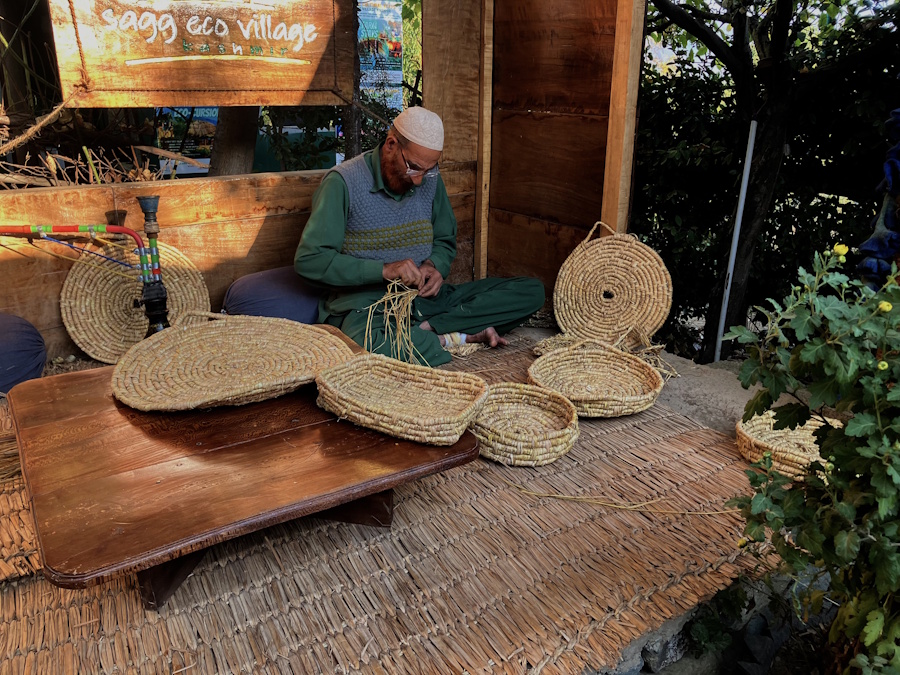
Photo: Fayaz Ahmad Dar
Around India
The temple town Tirupati’s eco-friendly waste management has earned recognition considering that it hosted 2.55 crore visitors last year.[8] The town processes about 115 tonnes annually “with scientific methods, three bio-chest machines, six decentralised waste processing facilities at major markets and gardens and 1,000 sanitation workers.”[9] The Tirumala Tirupati Devasthanam itself processes 1.85 lakh tonnes solid waste to produce 34,000 metric tonnes of treated soil.[10]
In Punjab, the government laid down a policy which stipulated that, to qualify as a farm stay, a minimum 2.5 acres of land with the house not exceeding two percent of the total land area was needed.[11] Pavail Gill runs a farm stay, an hour away from Chandigarh. “Our organic farm supplies to over 170 homes every day produce like milk, jaggery, fruits, desi ghee, vegetables, wheat flour, mustard oil,” he says.
The family-owned and run business welcomes visitors to the farm to see their system where each activity contributes to the other. “People who buy from us also stay with us and experience our practices,” he adds.
Choosing your tourist
Dar, Gill and Singh lay emphasis on the kinds of tourists they take in – those who truly love nature or getting to know guests before hosting them or not allowing on-the-spot bookings.
CB Ramkumar has gone a step further. Moving to India after working abroad for 17 years, he built an eco-resort outside Bengaluru in 2006 called Our Native Village. By 2008, it was generating 70 percent of its electricity through windmills, solar panels, and biogas plants. While looking for green certifications, Ramkumar realised that the bar for sustainable electricity was as low as seven percent. He launched the India chapter of the Global Sustainable Tourism Council (GSTC) and is the vice-chair.
In 2010, Ramkumar was on the team that developed the Sustainable Tourism Criteria by the Ministry of Tourism. This focused on guidelines for approving hotel projects, classification and re-classification of hotels using eco-friendly measures in construction and management, and so on. This meant a sewage treatment plant, rainwater harvesting system, waste management system, pollution control, non-Chlorofluorocarbon (CFC) equipment for refrigeration and air conditioning, and measures for energy and water conservation.[12] However, the criteria “remain frozen in time,” he says. This and apathy among hoteliers led him to start self-audits, training, and directing them towards eco-friendly products.
While implementing these criteria would lead to a degree of sustainability in specific hotels or farm stays that are environmentally conscious, it is still a considerable distance from ensuring that tourists are ecologically-sensitive or that tourism activity has not harmed the natural ecology of a destination.
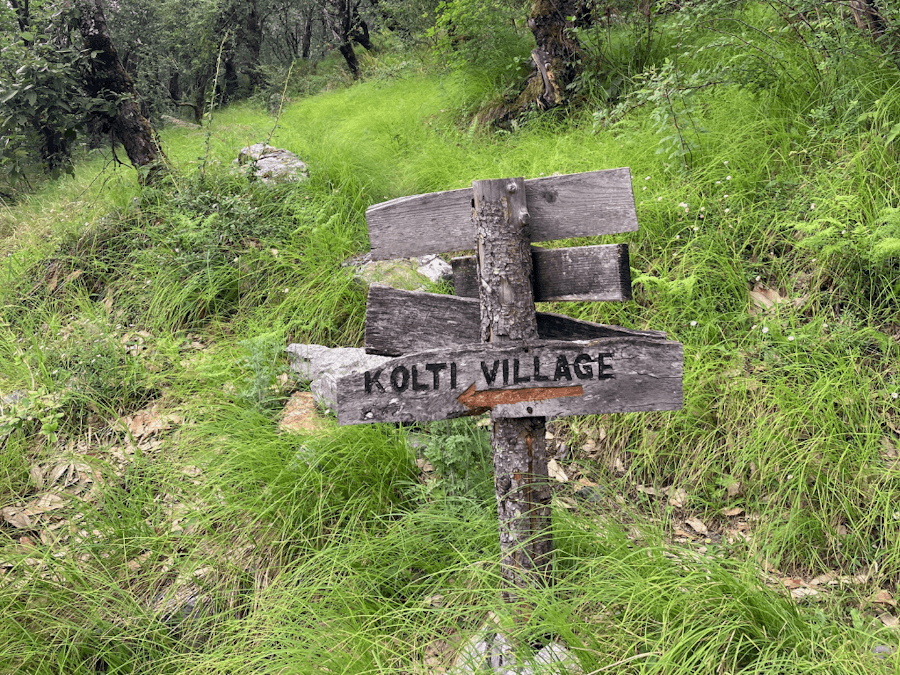
Photo: Virendra Singh
Ecotourism as greenwashing
As ecotourism becomes a part of branding in the marketplace, it can become greenwashing – a facade. Anything is passed off as ‘sustainable’. Given the positive sentiment around sustainability in general, ecotourism has been adopted as a label by tour companies, hotels, leisure venues and others to exaggerate or falsely claim the environmental benefits of their products and practices.
The use of terms like ‘natural’, ‘eco-friendly’, or ‘green’ creates a facade of environmentally responsible tourist offerings; most visitors do not have the time or knowledge to verify the claims and are satisfied that their stay and activities are sustainable. Tourism, a short-term activity for visitors or consumers, allows ample space for the industry to indulge in greenwashing. But sustainability is a difficult road and calls attention to socio-economic and cultural aspects besides, of course, the environmental impact of tourism.
“Greenwashing is now a scourge in the industry,” says Ramkumar, “All you need is hoteliers to change all the bulbs to LED bulbs or put a little note in the bathroom asking guests to use their towels twice, and suddenly they are eco-resorts.” These then fetch awards for being eco-friendly while the natural ecology around them continues to be damaged to build more of them.
To avoid greenwashing, “it is paramount that people within the industry understand what sustainability means,” says Aditi Chanchani, Chair, GSTC India Working Group. The organisation provides training for certification but the need is to close the gap between the tourism industry accepting the guidelines and implementing them. The lack of strict legislation means they are not accountable – and greenwashing continues.
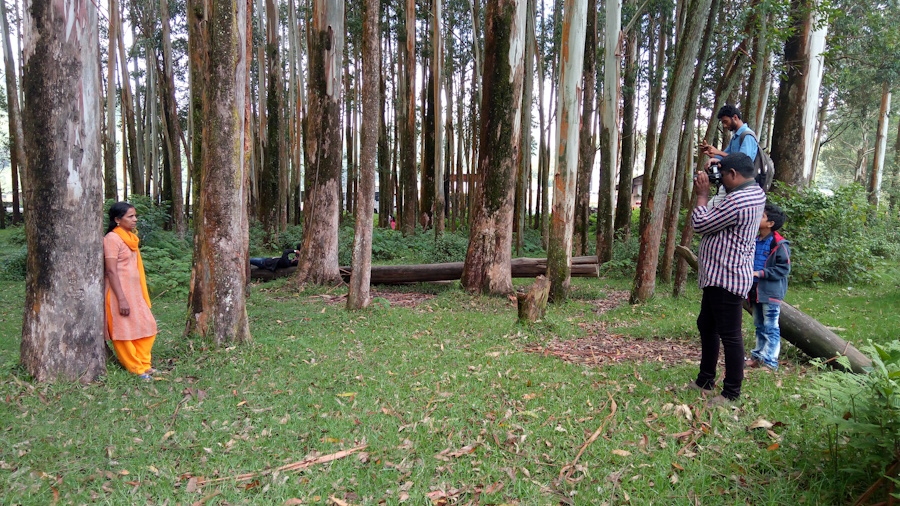
Photo: Wikimedia Commons
India’s strategy for ecotourism
India’s National Strategy for Ecotourism (2022) aims to leverage ecotourism for the conservation of forests, biodiversity, wildlife, and green landscapes, besides supporting forest-dependent communities with sustainable livelihoods and creating mass awareness. It has incorporated guidelines from the Ministry of Environment, Forest and Climate Change and the National Strategy on Sustainable Tourism. It recognises the potential for ecotourism but leaves much to be done to ensure that the industry follows its letter and spirit.
This is significant because the tourism sector is set to grow; the larger the share of ecotourism tourism in it, the better for the environment and local communities.
The sector’s contribution to GDP went back to the pre-pandemic level of five per cent in 2022-23 and created 7.6 crore jobs.[13] But “tourism consumes resources disproportionate to the value it adds back to economies,” says Ramkumar, explaining that a guest staying in a hotel room uses seven to nine times more water, in the name of luxury, than residents of the area.
Ecotourism is a niche segment and, by its nature, it means small-scale, local or native, not luxury and lavish. The movement has begun but Chanchani says, “somebody has to start leading the movement if it has to be a mass movement”.
The larger questions of ecological sustainability – tearing down forests, cutting hills, landfilling rivers, constructing on floodplains – to accommodate rising numbers of tourists remain unanswered. Ecologically sustainable tourism, in its real sense, has a long way to go.
Jashvitha Dhagey is a multimedia journalist and researcher. A recipient of the Laadli Media Award consecutively in 2023 and 2024, she observes and chronicles the multiple interactions between people, between people and power, and society and media. She developed a deep interest in the way cities function, watching Mumbai at work. She holds a post-graduate diploma in Social Communications Media from Sophia Polytechnic.
Cover photo: Jashvitha Dhagey

